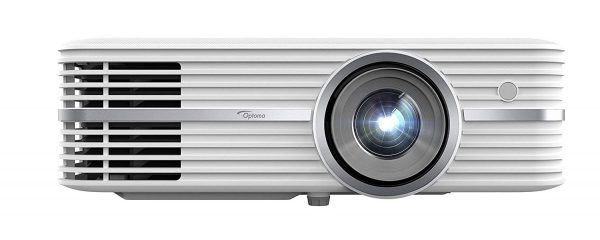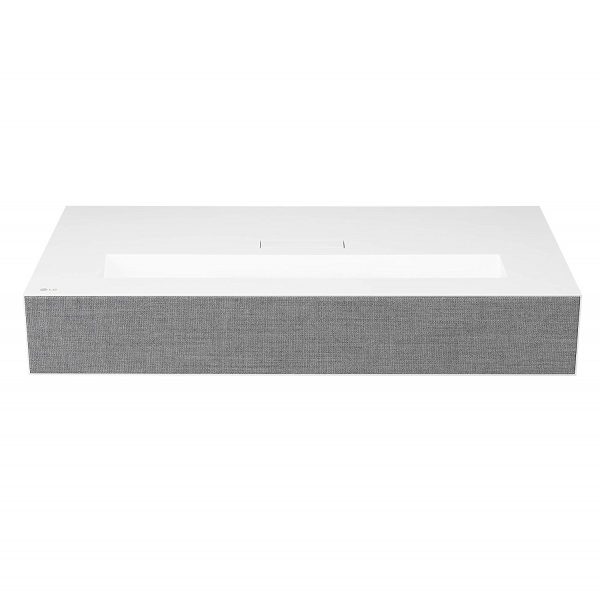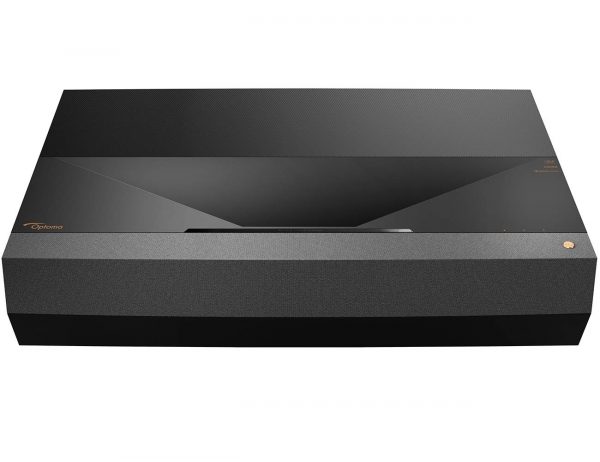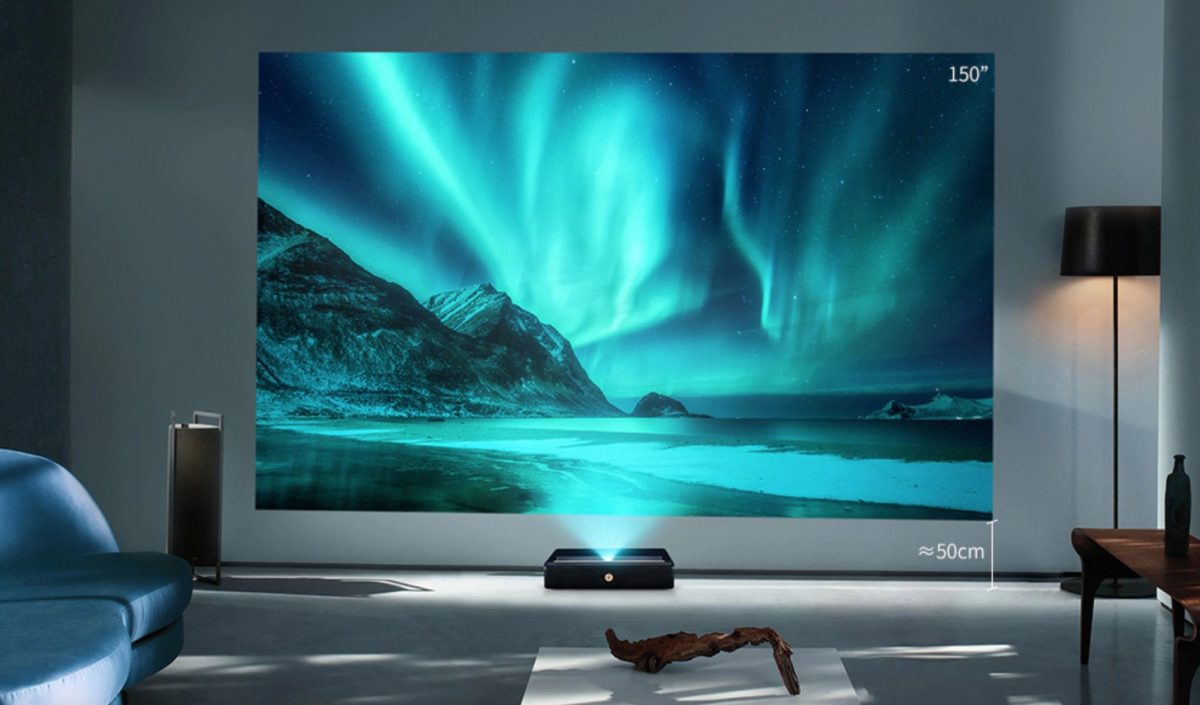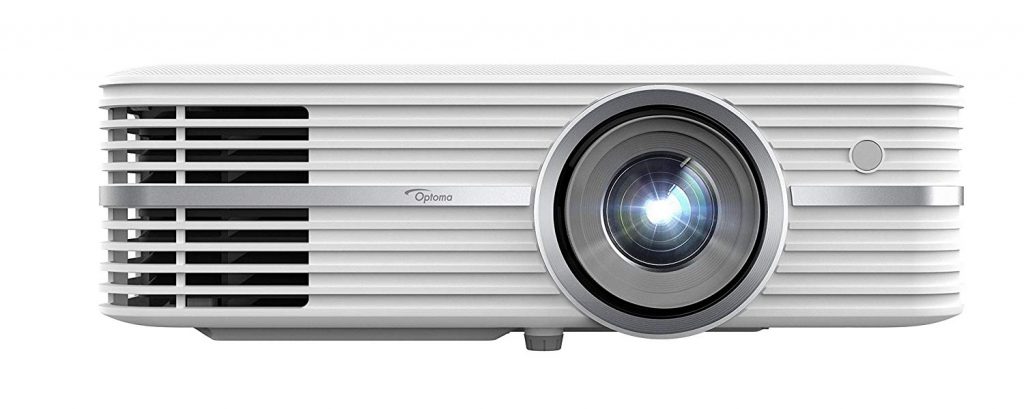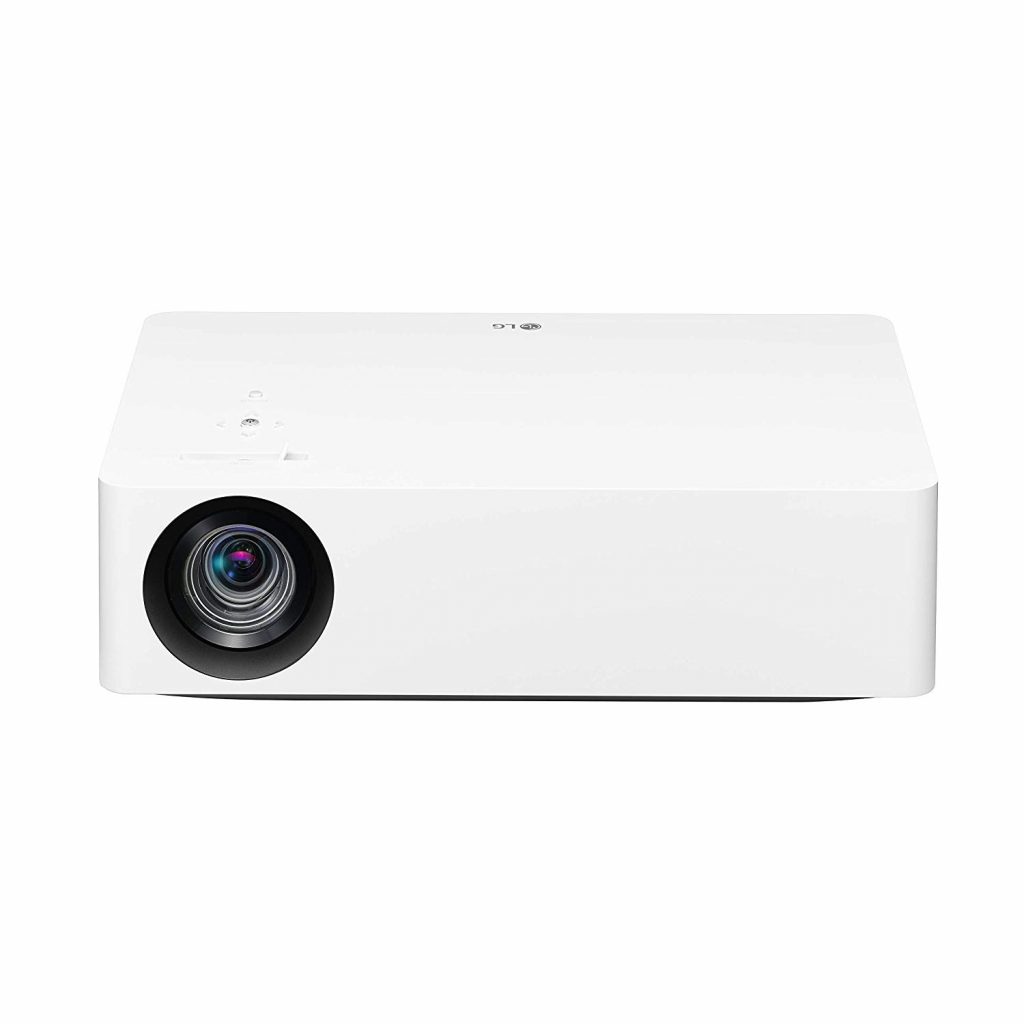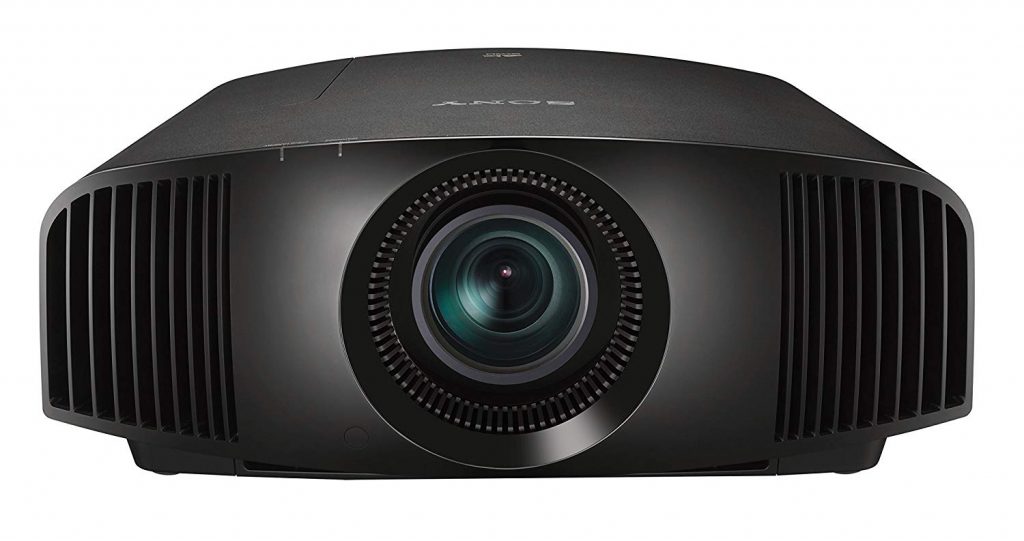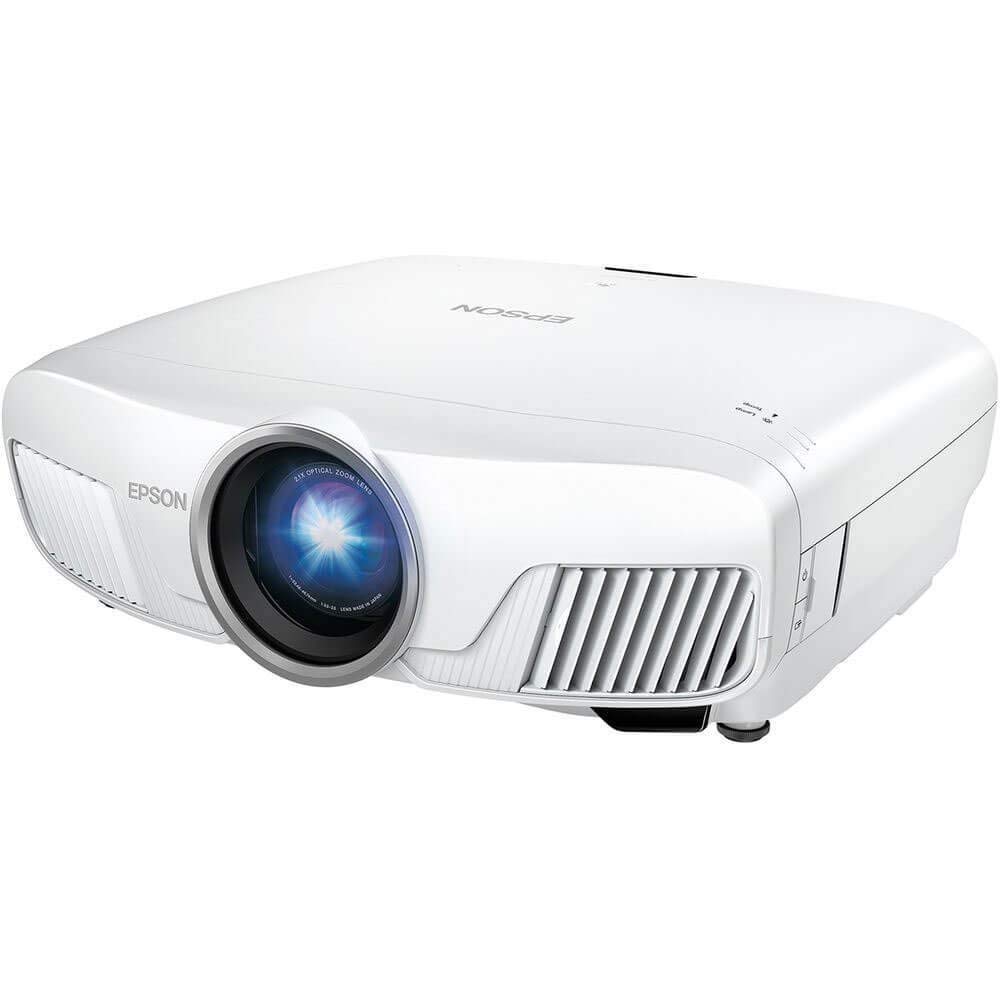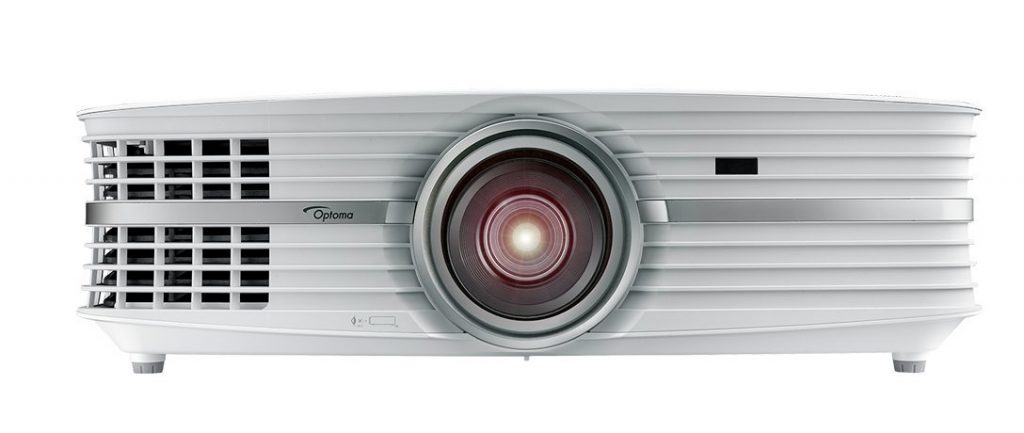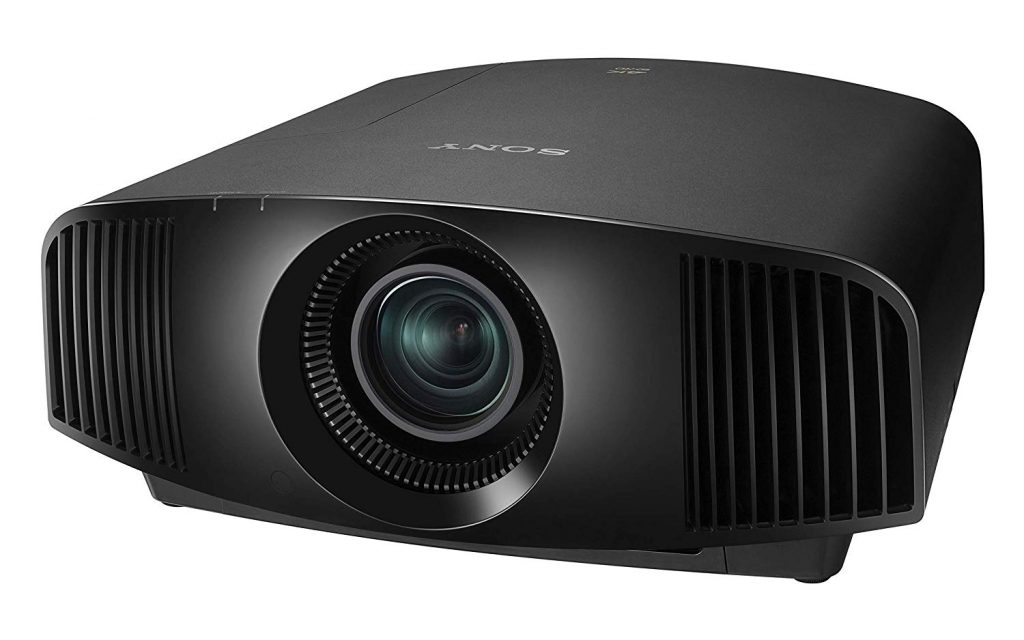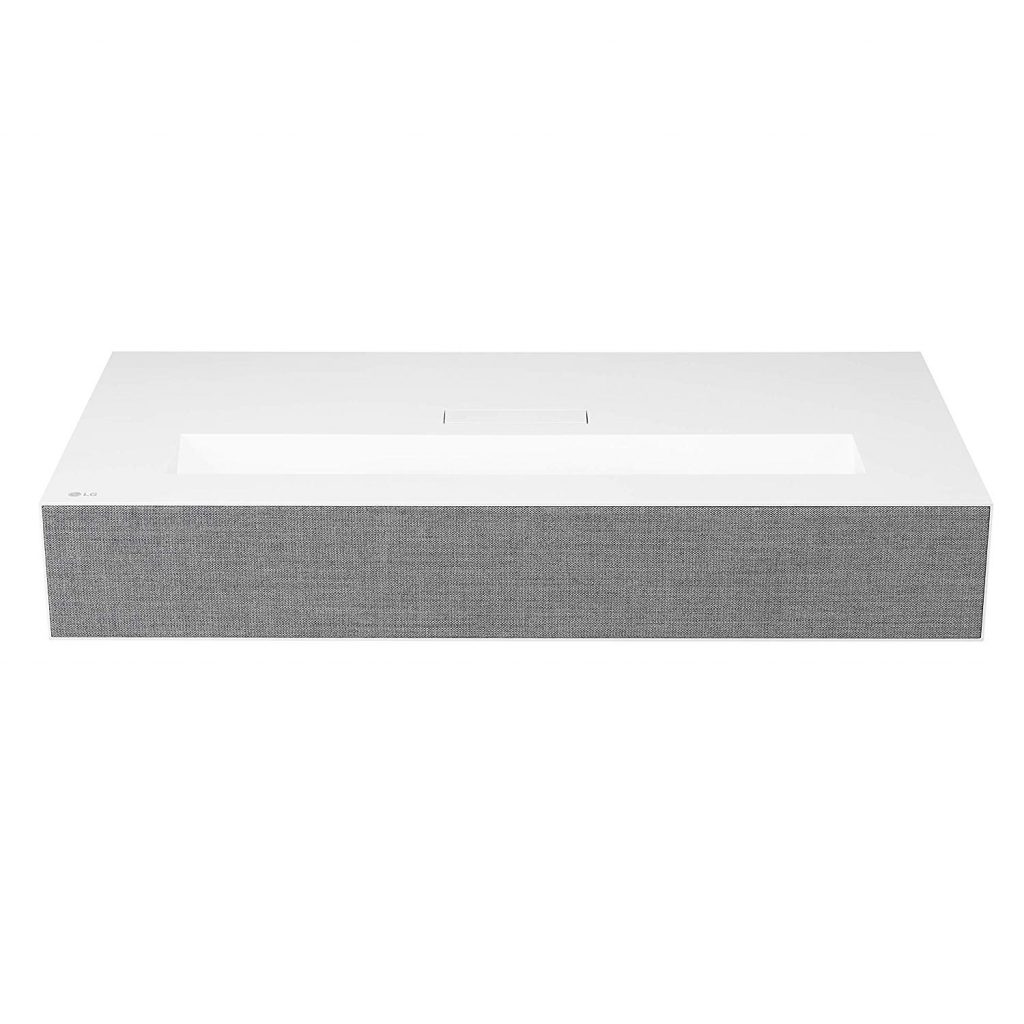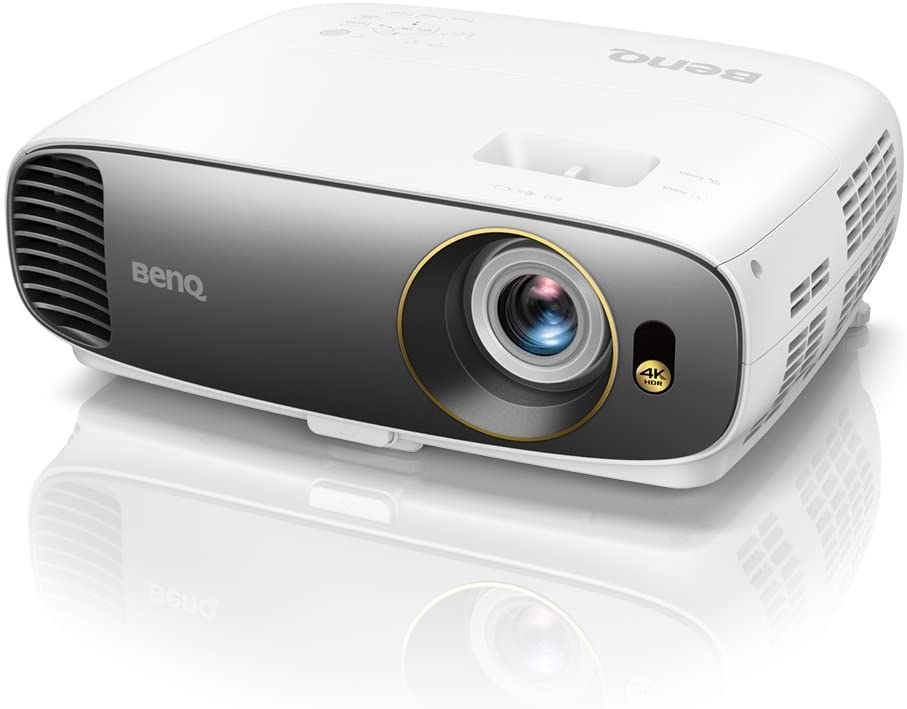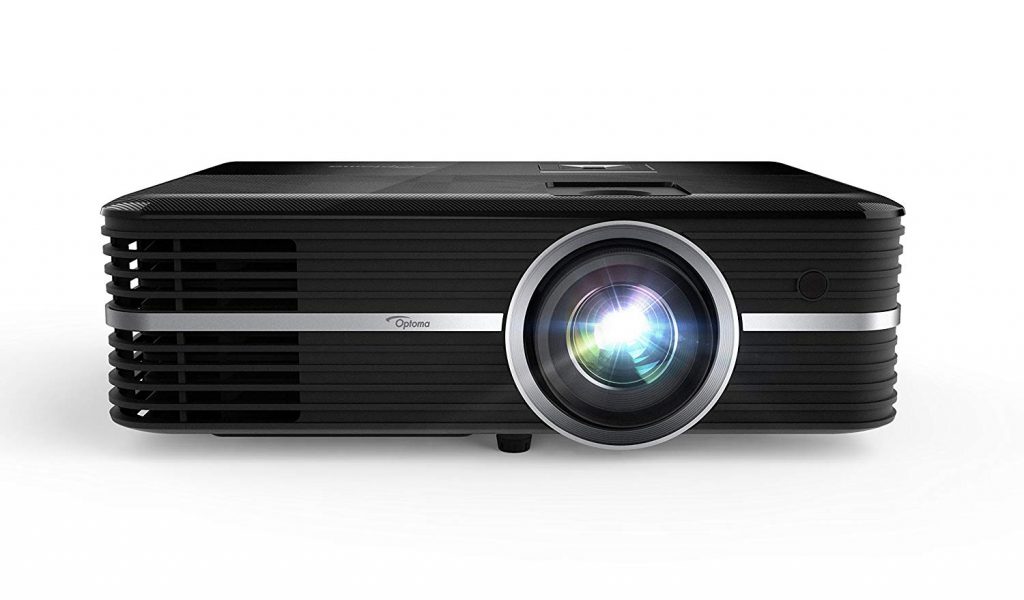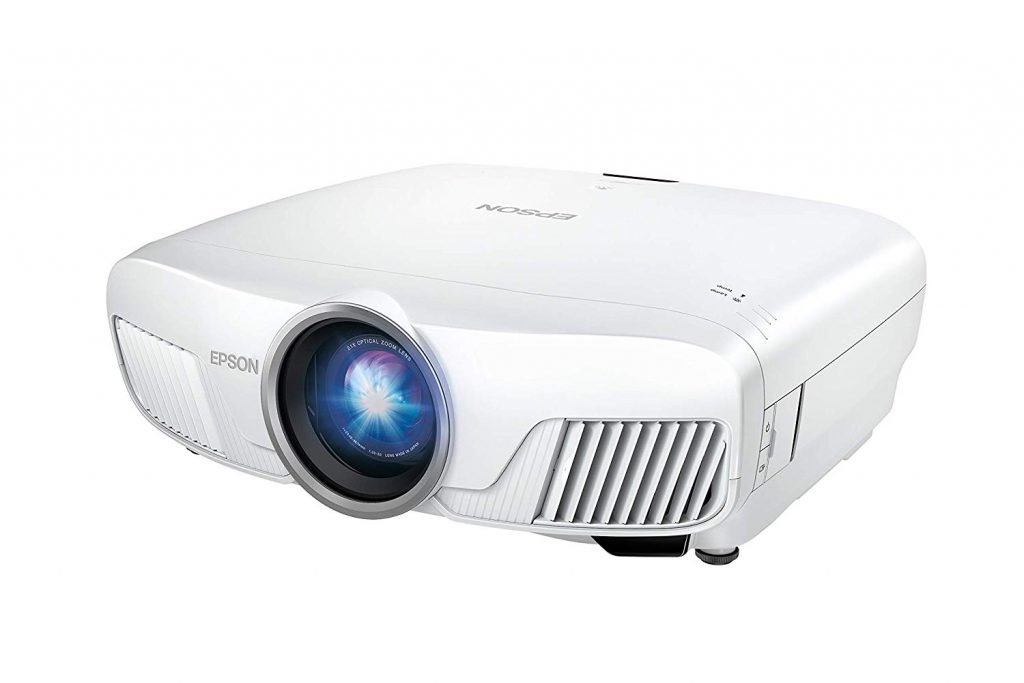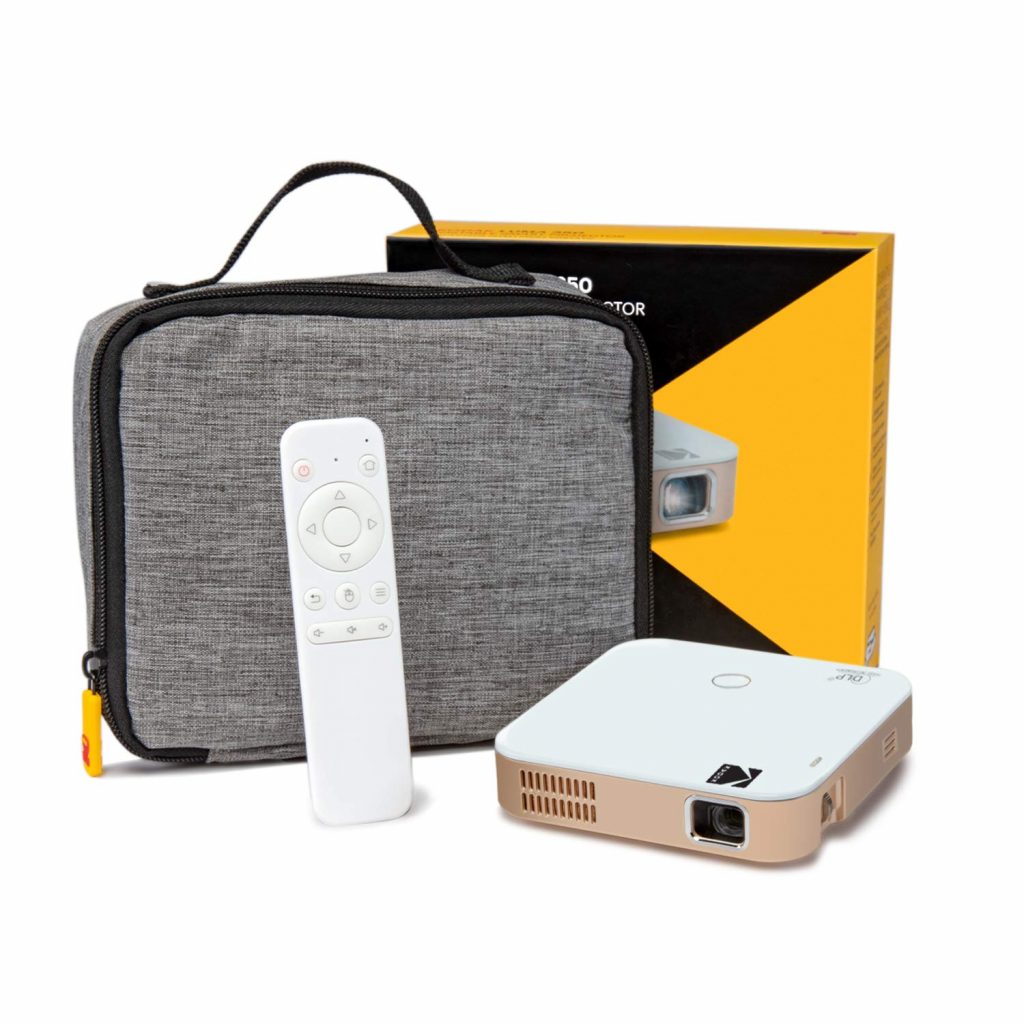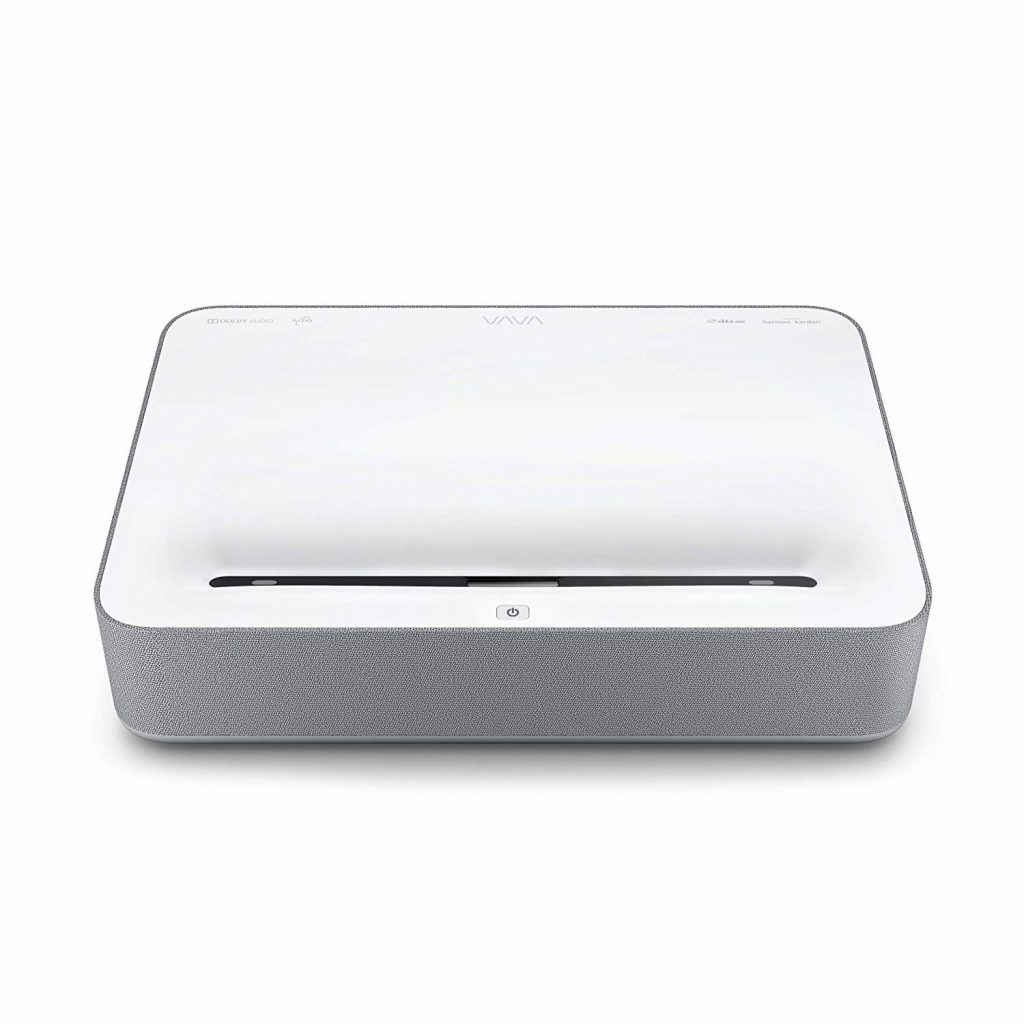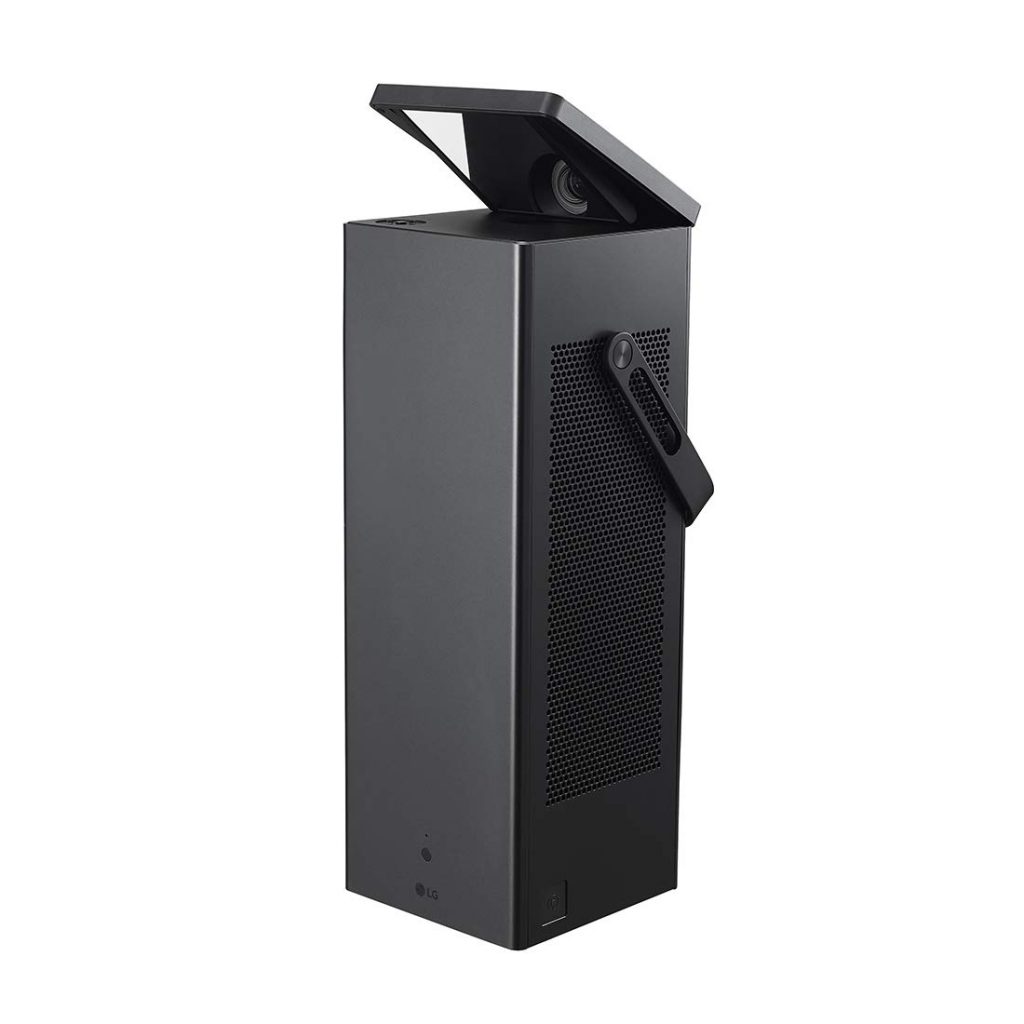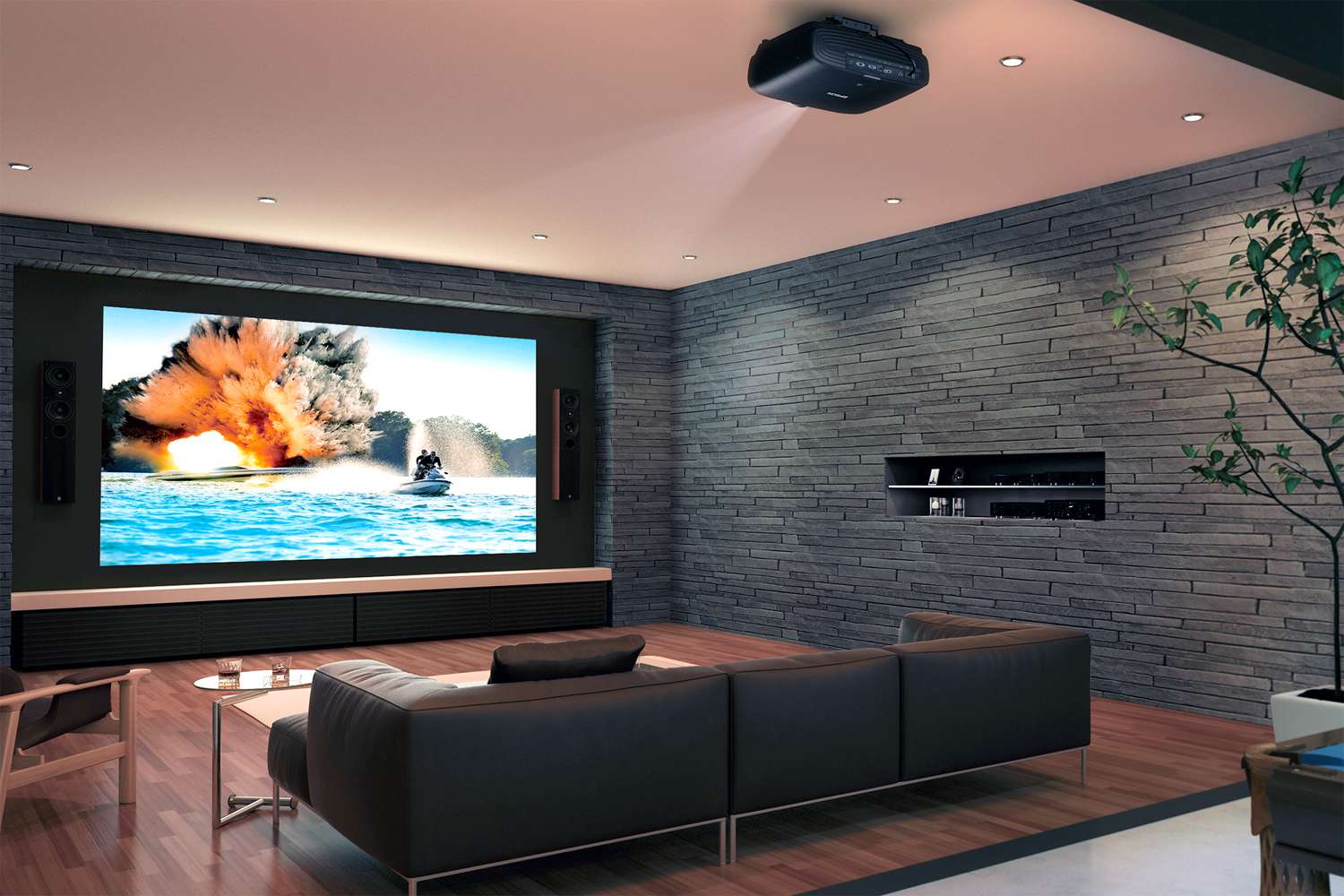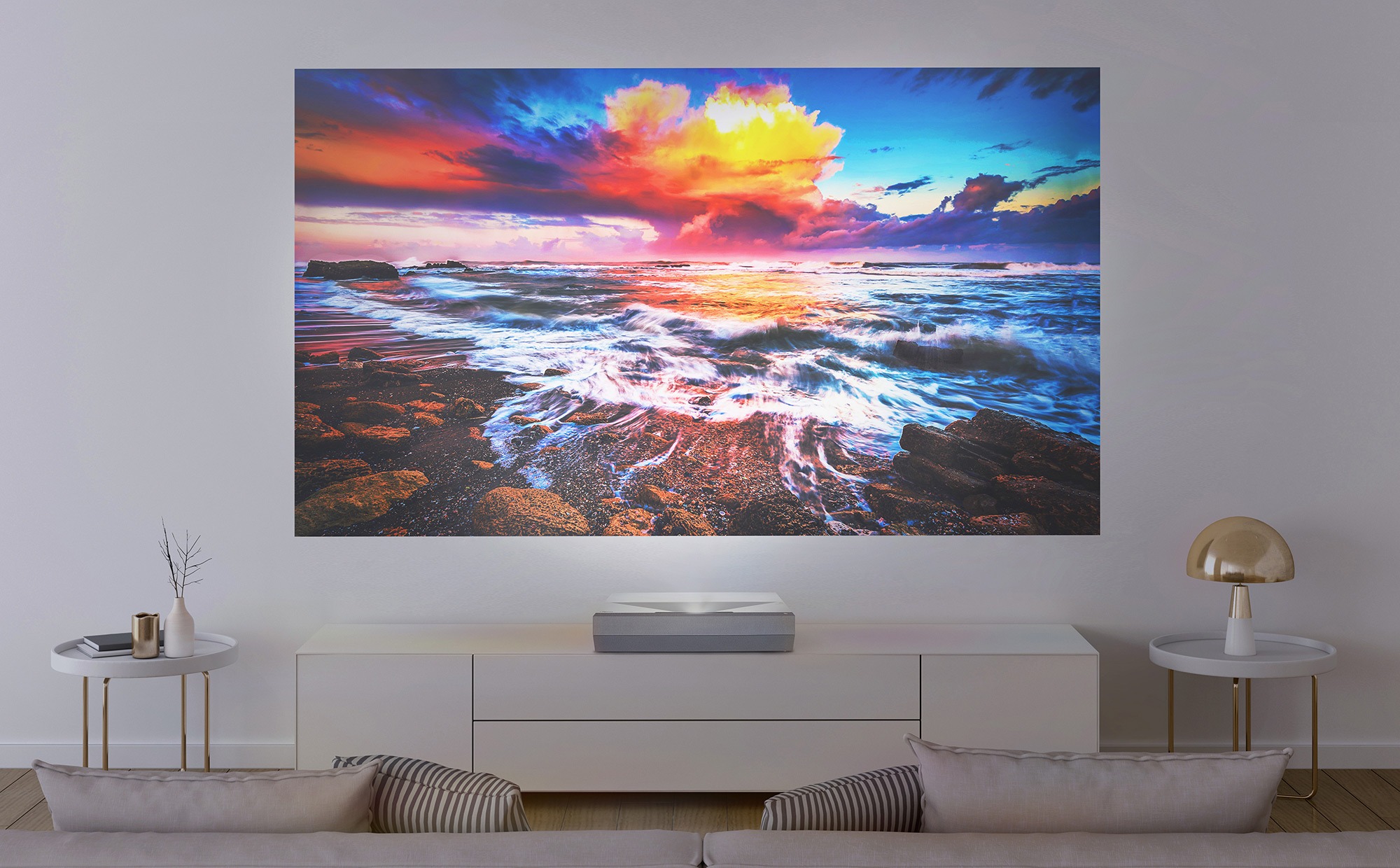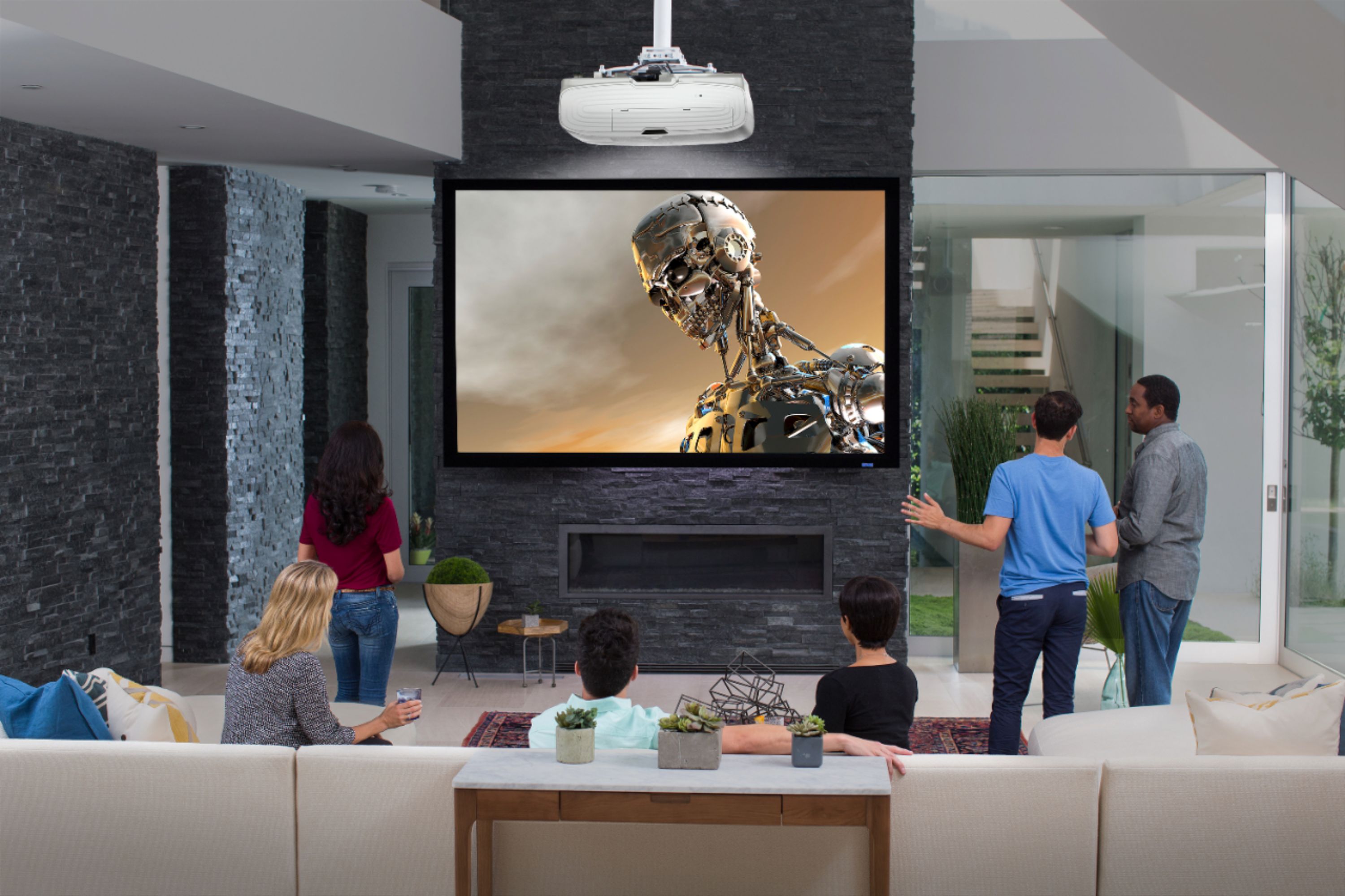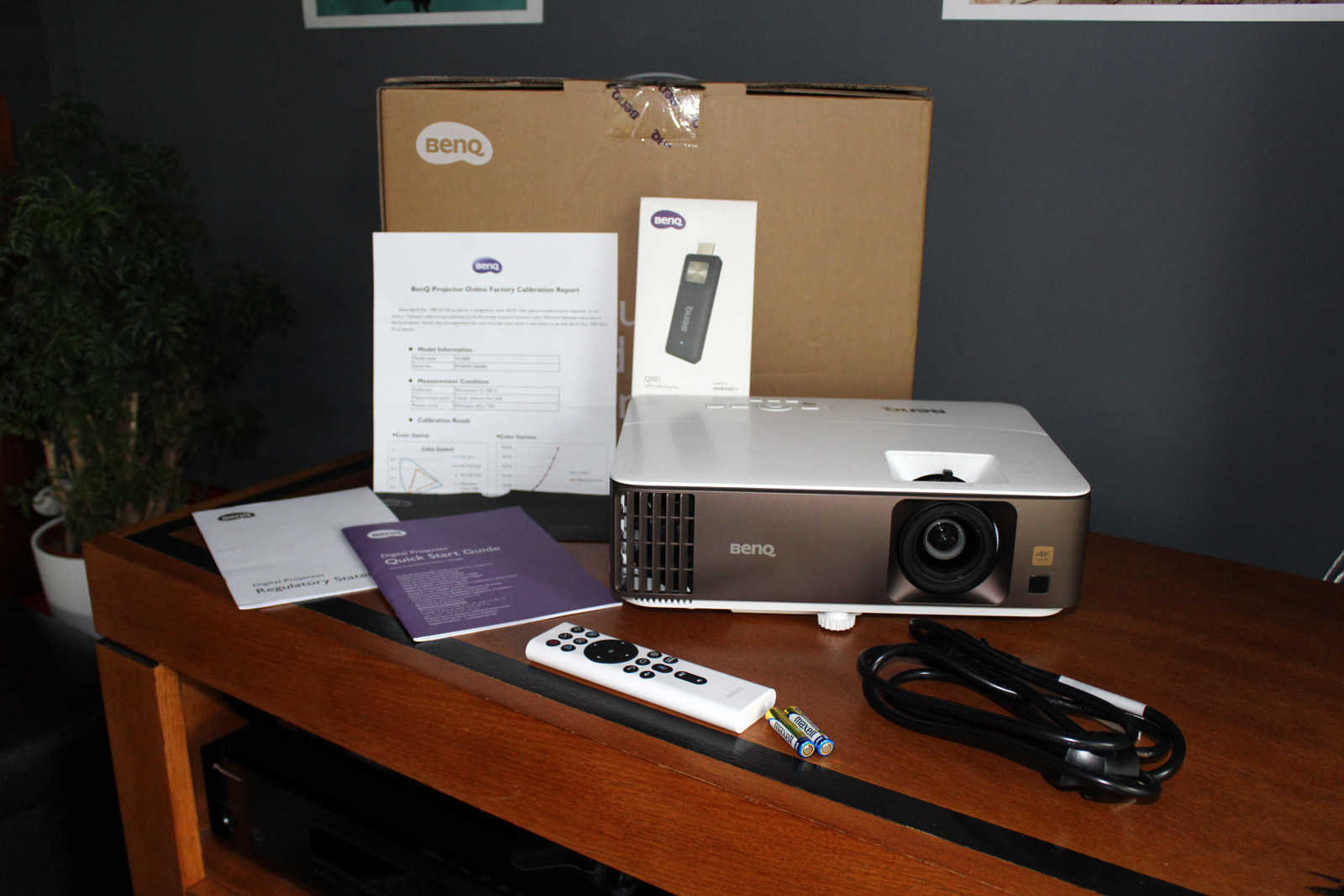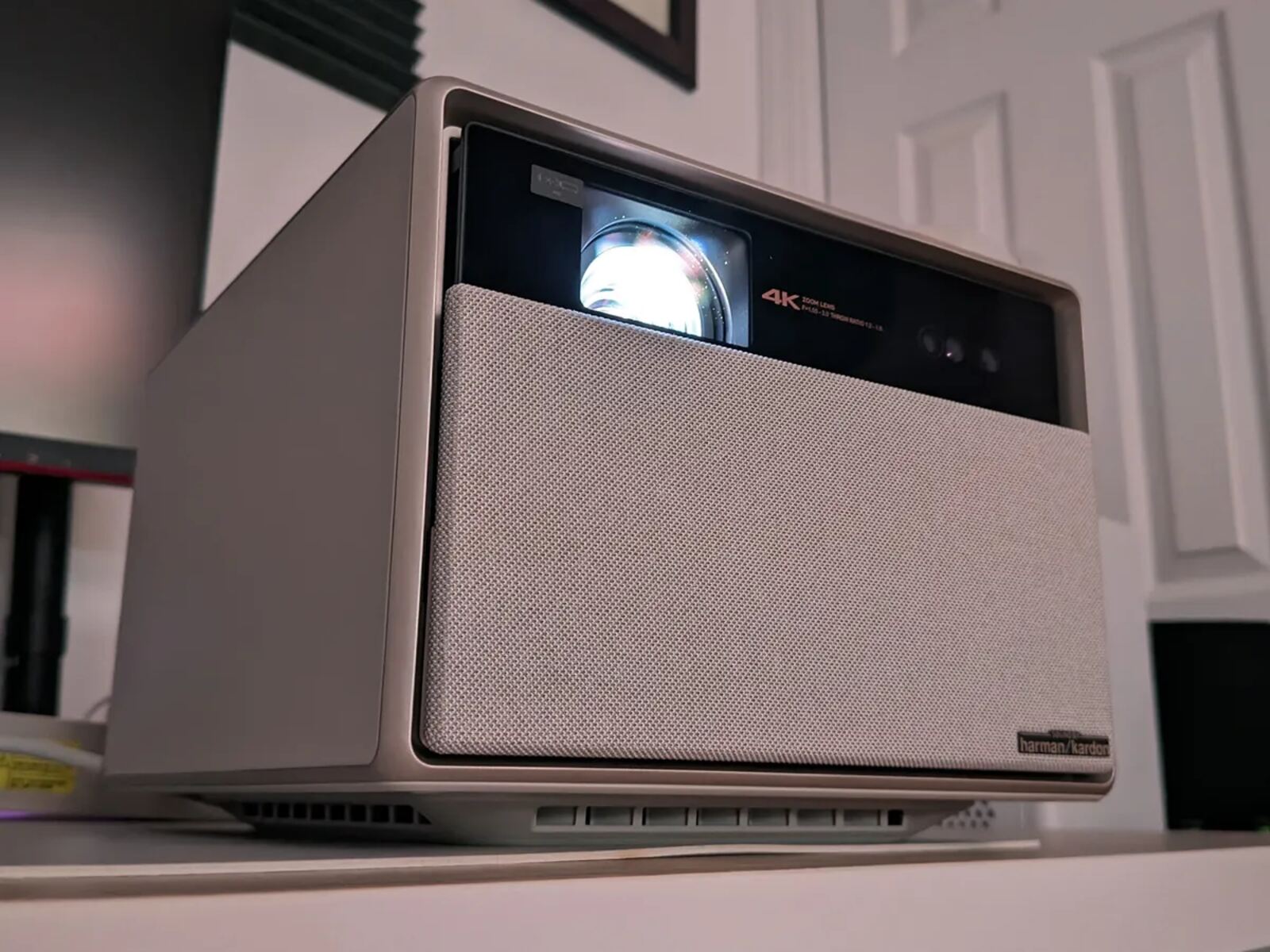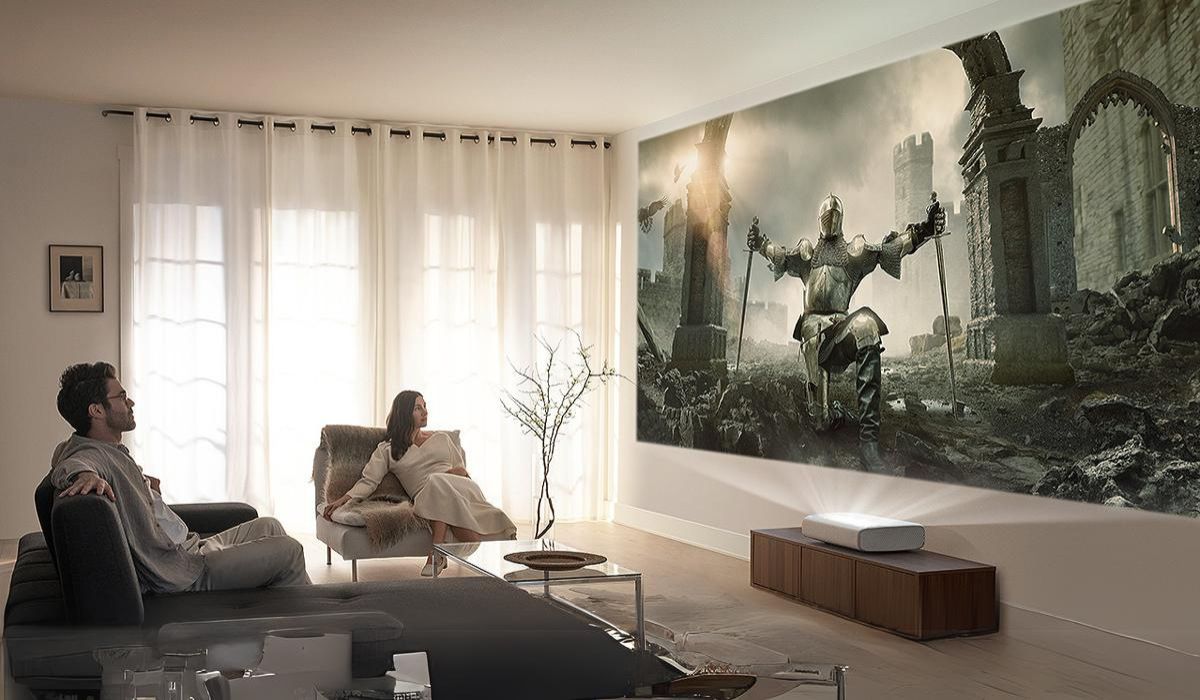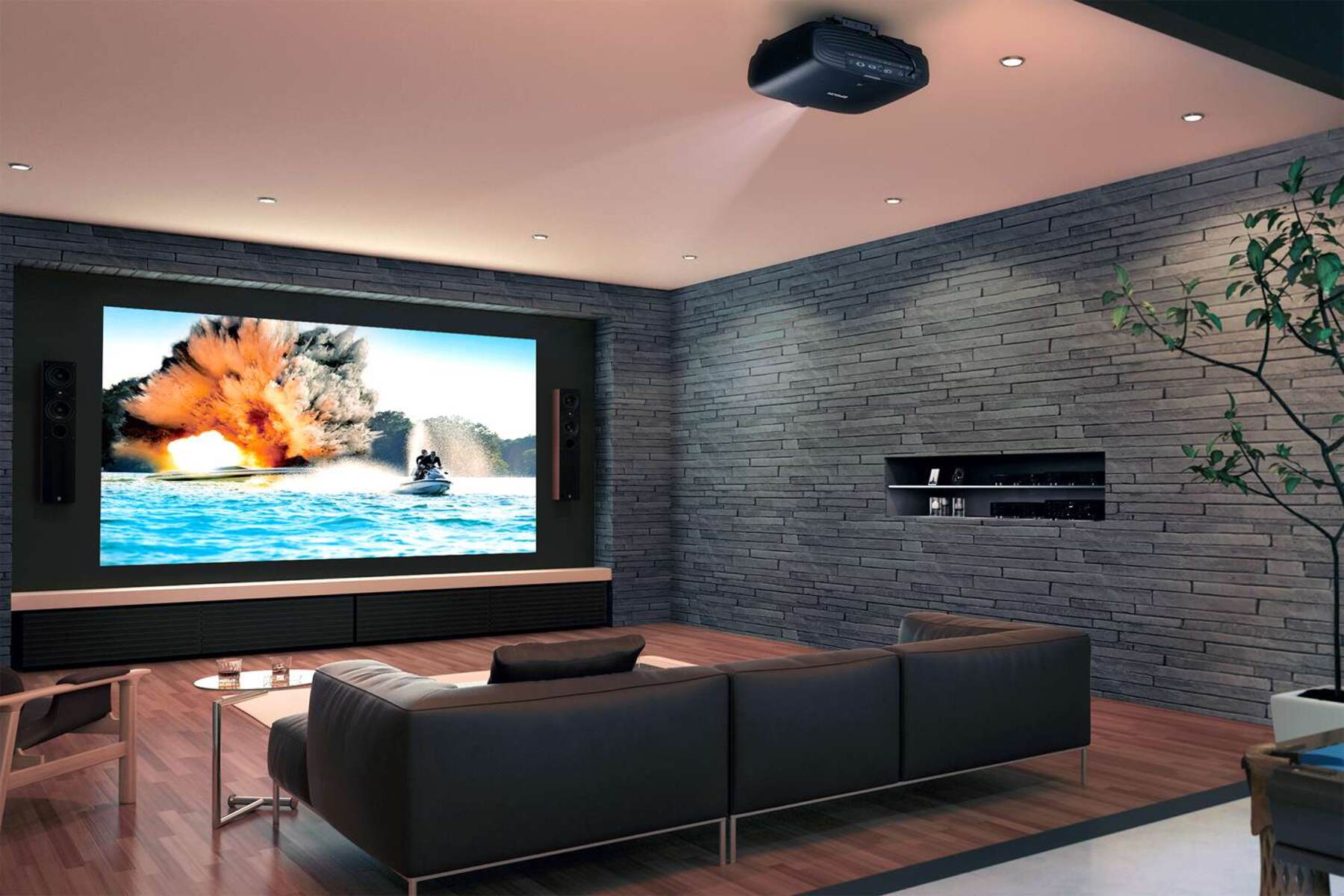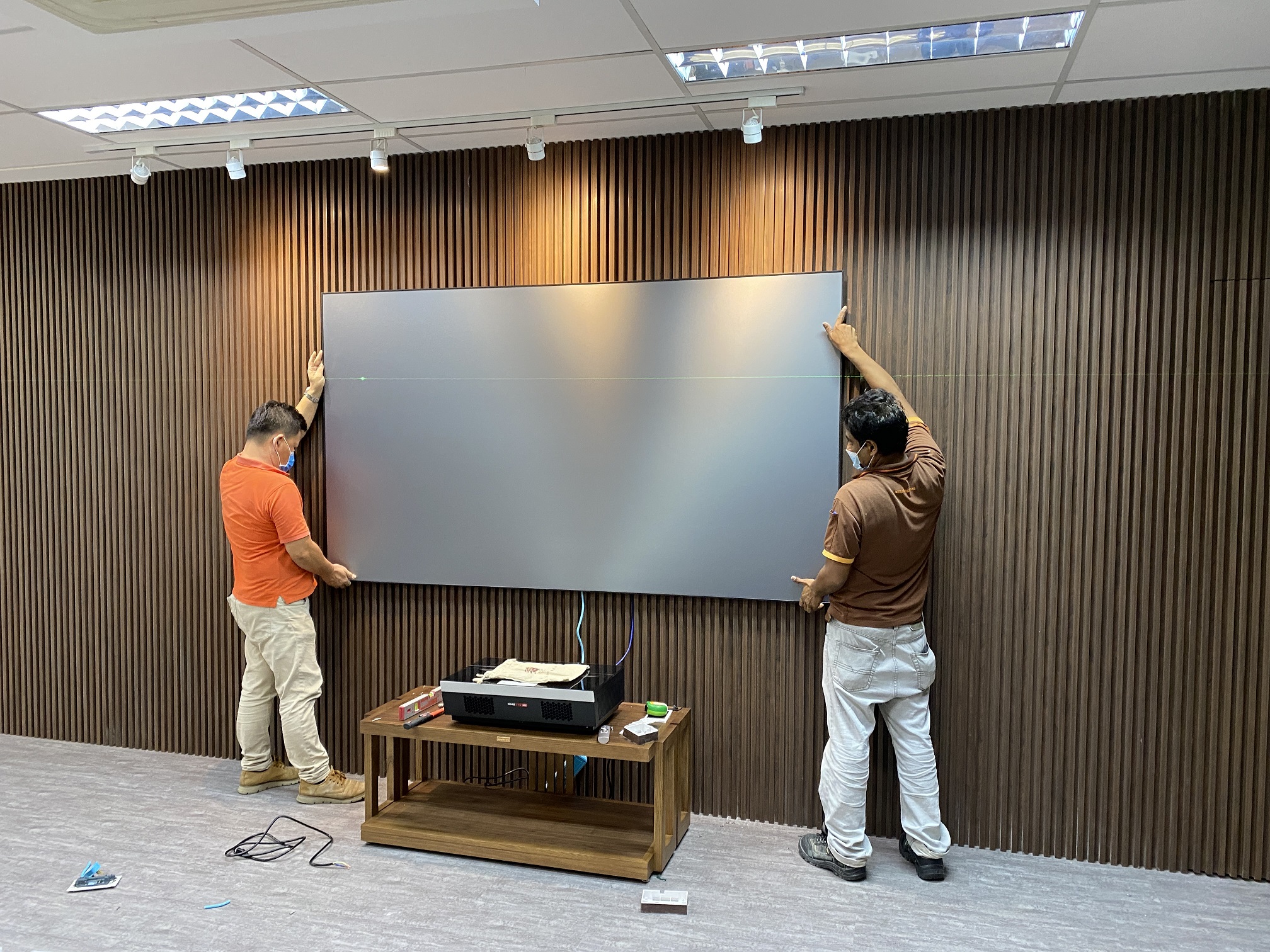A 4K projector is becoming a must-have item in one’s home. Like 4K monitors, it is becoming a popular item used for home cinema. This is because people want a larger screen size as well as the best image resolution.
As suggested by its name, 4K projectors show images in 4K. This means it can display more pixels than your usual projectors. This also means that you can see clear, sharp and colorful images.
There are a lot of 4K projectors in the market. But, this buying guide will help you get the best 4K projector today.
Best 4K Projectors to Buy Today
This 4K projector from Optoma provides 4k projection features at a low price. It has a 2,400-lumen lamp, an enhanced color wheel, and a wide color gamut. It also has digital light processing and dynamic black. The projector accepts high dynamic range signals and can project in HDTV standard. These mean that it can project images with rich color, depth, and sharpness. It has 4K UHD video source compatibility, vertical lens shift, and 1.3x zoom. These make the projector’s installation easy and allow for it to be flexible.
LG’s 4K projector brings the cinema to your home. It is a ceiling-mounted projector that delivers precise and detailed 4K picture quality. It has a wheel-less LED technology that allows it to project pictures with better color. The projector is easy to adjust with its 1.25x zoom and remote focus. Its use of dynamic tone mapping means that the projected pictures are true to the original. It also makes use of TruMotion to make the animation look fluid. The projector also has AI and smart content access to make it easy to use. It also has connectivity through Miracast, USB, Wi-Fi, and Bluetooth.
Sony’s 4K home theater projector makes images feel lifelike. This projector can project images in native 4K and is compatible with high dynamic range content. It makes use of 1,500 lumens to make images bright and clear. It also has an SXRD panel, Reality Creation, Motionflow, and TRILUMINOS. These make the projected images look clear, colorful and smooth. It also has supports for HDMI, 3D and even IMAX. Adjusting this projector is easy with its motorized lens that has a 2.06x zoom and wide lens shift range. Its lamp is low maintenance and can run up to 6,000 hours.
Epson’s 4K projector gives a low-cost option for home theater 4K projectors. It has 4K enhancement technology, up to 2,500 lumens of color brightness and 1,000,000:1 contrast ratio. This makes any image projected look clear, bright and detailed. It also has a lens that shifts in vertical and horizontal directions. Aside from supporting 4K, it can also project 3D images.
Optoma’s 4K projector aims to give a home theater experience with its features. It makes use of a high dynamic range and 3,000 lumens to deliver clear, colorful and sharp images. It also comes with a color management system, a wide color gamut, and UltraDetail. The projector is adjustable using its lens with a vertical shift and 1.6x zoom. It has a reliable lamp that runs up to 15,000 hours.
Sony’s projector gives anyone a chance to enjoy the 4K cinema viewing experience at home. It has native 4K with Reality Creation that makes images enhanced and life-like. Its SXRD panel, MotionFlow, and TRILUMINOS make sharp, smooth and colorful images. It has a bright 1,500-lumen lamp that works up to 6,000 hours. The projector is also compatible with IMAX and 3D content.
LG’s smart 4K projector makes it easy for you to set up your dream home cinema. It can project in 4K resolution that makes images look sharp, vivid and realistic. It also makes use of 3 channel laser technology that does not use a color wheel. This allows for the accurate reproduction of the colors of any image. It makes use of a 2,700 lumens lamp that makes bright projection indoors easy. The projector also projects images in their original quality with dynamic tone mapping. Images end up looking smooth on the screen with the projector’s TruMotion. The projector has AI and smart content access making it easy to use.
BenQ’s home theater projector gives real cinema experience in the living room. It projects at 4K resolution through the use of digital light processing. This allows the clear, sharp and accurate projection of images. Its optical system and HDR support allow for the realistic projection of images. It also has a color accuracy technology that allows for an image’s true and clear colors to show. It is a short-throw projector that can show a 100-inch screen from 10 feet. The projector has a 1.2x zoom and an auto-adjust whenever it is off-center. The projector also features sound modes that are adjustable depending on the need.
Optoma’s smart projector allows for HD projection even in the smallest of spaces at home. It can show images in HD resolution and is HDR compatible. This makes images shown to look detailed and lifelike. It can copy the color gamut used in HDTVs to show cinematic color. The screen is easy to adjust with the projector’s use of four corner correction. The projector makes use of a laser which allows it to run up to 30,000 hours. It has a built-in stereo system and its own media player.
BenQ TK800
BenQ’s projector allows for an immersive home entertainment experience. It can project up to 4K resolution with clear image quality and accurate colors. It also has an audio system that allows for deep and rich sound. Its lamp is not only bright but also able to run up to 10,000 hours. The projector has a 1.2x zoom and an adjustable screen. It also comes with two special modes for viewing football and sports.
Optoma’s smart 4K projector makes the home theater experience much easier. The projector can show images up to 4K resolution and has a wide color gamut and HDR. This makes the projected images look clear and lifelike. It also makes use of a 2,400-lumen lamp to make the images look bright when projected. Its lens is adjustable upwards and downwards when needed. Its integrated media player allows playback for videos, images, and audio. The projector has voice control that is compatible with Google Assistant.
This home cinema projector from Epson allows for a great 4K experience. It shows images up to 4K resolution with UHD, HDR, and LCD. Images look detail and its colors are bright and accurate. It has a 2,400-lumen lamp that is usable for up to 5,000 hours. The projector’s lens is adjustable using a three-axis precision motor with a 2.1x zoom.
Kodak’s Luma 350 projector allows for a mobile solution to 4K viewing. It has a DLP projection with a 350-lumen lamp that allows for cinema-quality 4K projection. It uses an Android interface and is compatible with a variety of smart devices. The projector is compact enough to fit into pockets and bags to make it easy to bring anywhere.
This VAVA projector allows for 4K viewing using a 150-inch projection area. It is an ultra-short throw projector that allows for use in small spaces. It uses a 6,000-lumen lamp that allows for bright image viewing up to 25,000 hours. The projector has dynamic contrast and a wide color gamut to make images look clear and colorful. It has an integrated stereo sound system and a smart Android system.
This LG projector gives a top theater experience to any room. It can show images up to 4K quality using a 150-inch display. It makes use of HDR that allows for an image to look lifelike in its details and colors. The projector makes use of a 2,500-lumen lamp that runs up to 20,000 hours. The design of the projector allows for portability and easy storage. It can also screen share with wireless devices and adjust any image distortions.
What is a 4K projector?
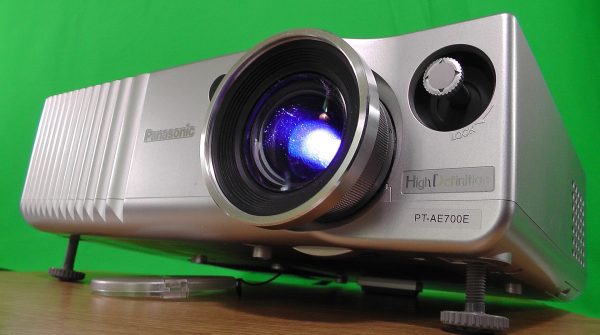

4K projectors are projectors that can display images in 4K resolution.
4K is a high definition resolution that is either 3,840 x 2,160 pixels or 4,096 x 2,160 pixels. It is also defined as four times the pixel resolution or twice the line resolution of 1080p. This resolution is usually used in commercial cinema. 4K is also known as Ultra HD or UHD, as well as 4K x 2K, 4K UHD, Quad HD and 2160p.
4K resolution is now found in a variety of uses. One of these is in 4K projectors for home theater setups. There is a growing need for 4K resolution as screen sizes become larger. Lower resolutions such as 720p and 1080p have visible pixels when seen on a large screen. 4K resolution reduces pixel visibility and makes images look smooth and have depth.
4K projectors and Faux-K projectors
There are 4K projectors that use pixel-shifting technology. Pixel shifting technology that improves the resolution of an initial image. This involves an image sensor shifting half a pixel then saving the image. It creates a lot of saved images that are then stitched together for better image quality.
There has been a debate on considering 4K projectors with pixel shift as real 4K projectors. “Faux-k projectors” is a term used by some to refer to 4K projectors with pixel shift. This is as if to suggest that these are inferior to other 4K projectors.
But, “faux-k projectors” are still projectors that can display images in 4K resolution. They are not inferior to other 4K projectors and there are times that those with pixel shifts are better. In the end, it depends on the brand and the device if it is a good 4K projector or not.
How does a 4K projector work?
To understand how 4K projectors work, we must first talk about pixels.
Pixels are elements that contain information for colors red, blue and green. Combining many pixels creates an image. The number of pixels used for an image determines the resolution. For 4K resolution, it needs over 8 million pixels. These 8 million pixels will consist of 3,480 rows of horizontal pixels and 2,160 columns of vertical pixels.
For 4K TVs, 8 million pixels are easy to cram as its screen sizes are large. But, for 4K projectors, they need to cram 8 million pixels into a chip that can go as small as one square inch.
There are two ways that 4K projectors do this.
Native 4K approach
The native 4K approach involves cramming in more than 8 million pixels into a single chip.
Sony uses the native 4K approach in their 4K projectors. For their projectors, Sony places three chips containing 8 million pixels. There are three chips for the colors red, blue and green.
Pixel shift approach
The pixel shift approach involves a 1080p chip of over 2 million pixels copies a 4K resolution chip.
For a 1080p chip to achieve 4K resolution, the projector shifts the chip. The chip shifts until it reached the needed number of pixels for 4K projection. This creates two 1080p images which the projector shows as one near 4K resolution image.
The direction of the pixel shift depends on the brand. For LCD projectors from Epson and JVC, the pixel shift is diagonal. In Texas Instruments’ chip for DLP projectors, it is clockwise. A 4.15-million pixel Texas Instrument chip for DLP projectors shifts in a diagonal way.
Why is a 4K Projector Expensive?
4K projectors are expensive despite 4K TVs going for as low as $300. High-end 4K projectors go for as much as $5,000 while entry-level ones go for around $1,000. So, what’s the reason behind these prices?
The answer lies in the pixels. Fitting more than 8 million pixels into a small chip is meticulous work. So, it also means that it involves some pretty expensive processes to produce a single chip.
Native 4K projectors are the most expensive among 4K projectors. One such brand that has native 4K projectors is Sony and their projectors go for as much as $5,000.
Meanwhile, 4K projectors with pixel shift are less expensive. This is because you only need less work to produce 1080p chips. 4K projectors with pixel shift go for around $1,000 to $2,000. If you’re looking to maximize your 4K projector’s value, you might want to download HD movies and videos. You might want to check out our guide on how to download movies and see different ways of getting a copy of your favorite flicks.
How to Use a 4K Projector?
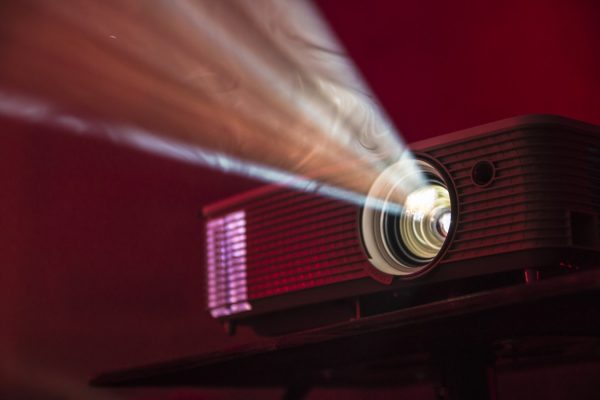

The proper use of a 4K projector relies on its proper setup. Your 4K projector may have the best specifications and features. But, without the proper setup, it will all go to waste.
Where to place a 4k projector?
The first step to a proper 4K projector setup is knowing where to place it. You need to know the throw ratio of your projector. This is the ratio between the distance of the projector from the screen and the displayed image size.
For this, you can check your projector’s manual to know the throw ratio. You can also get a hint on the throw ratio by checking if a projector is a long-throw or short-throw. Long-throw means that you need to place the projector far from the screen. Short throw means that you can place the projector near the screen.
You also need to decide on whether to use a projector screen or a blank wall. A blank wall is fine to use for 4K projectors. But, a projector screen allows for a much clearer, sharper and more colorful image on the screen. If possible, find a screen with a black frame as this improves contrast.
Position of a 4k projector
Second, position your 4K projector properly. Your projector should be in a position where the displayed image is not distorted. An ideal place to place your projector is flat surfaces. When in slanted surfaces, some 4K projectors have the option to adjust the screen corners. Also, projectors have a zoom option that adjusts through dials or electronic control.
4K projector’s focus
Third, you need to set your 4K projector’s focus. This will make sure that the image appears clear and sharp. Make sure that there is much less pixelation as you adjust the projector.
4K projector’s settings
Fourth, you need to set your projector’s settings to make the displayed image look perfect. You will need to adjust the settings for contrast, color, brightness, and quality. You can have it set to presets or adjust starting from them.
Audio
Fifth, you will need to set up the projector’s audio. Some projectors would need to have an attached sound system. But, some projectors already comes with a good sound system.
What to consider when buying a 4K projector?
Before buying a 4K projector, you need to consider the following. This will help you choose a projector that is worth it and meets your needs.
Purpose Of 4K Projectors
First, know for what purpose you are getting the projector. Know if you are going to use the projector for entertainment or business. Then, know if you will be using it indoors or outdoors. Knowing these will help you know the ideal technical specs for your projector.
Technical specs
Second, check for the 4K projector’s technical specs. Find a projector that is suitable for your needs. Check the projector’s specs for brightness, contrast, zoom range, and lens shift. Also, check if the 4K projector uses native 4K or pixel shift. You can also check if it has other features such as HDMI port, USB port, and Ethernet port.
Other features
Third, you need to check a 4K projector’s other features. Check if it is reliable based on how long a projector’s lamp will run. Also, check if its lamp will have a long run when the projector is on maximum settings.
Consider also if the projector is portable. The point of getting a projector is to screen videos almost anywhere. Check if the projector is easy to move from one place and to set it up in another place.
Also, check if you would need other equipment when using the projector. Find out if you would be needing a projector screen or if you would be using a blank wall when screening. Check also if you are going to use the projector’s built-in speakers or if you would be needing a sound system.
4K projector cost
Fourth, check if it is going to be worth it. Remember that 4K projectors are expensive. Make sure that its features and specs are going to be worth the money.



